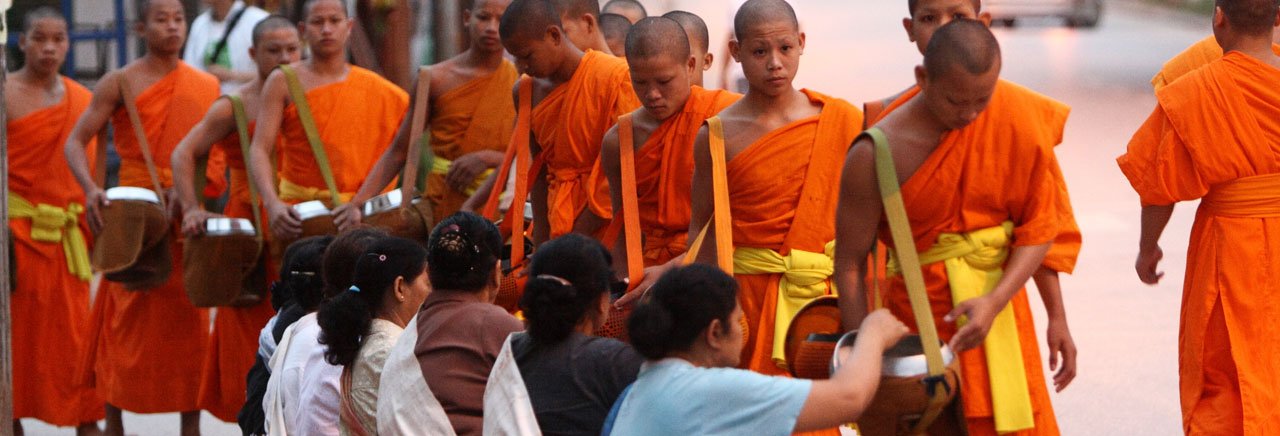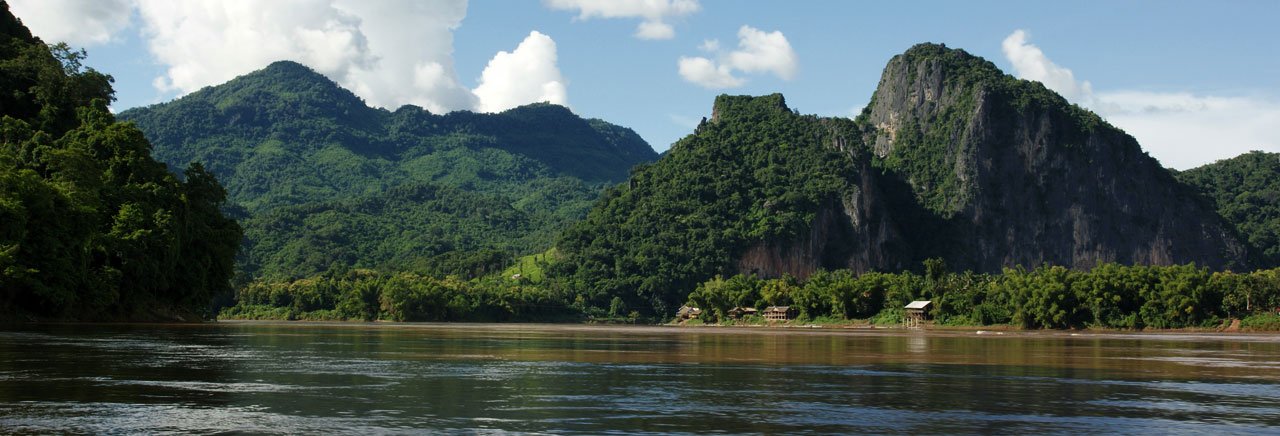 Image Credit: Benh LIEU SONG / Wikipedia / CC-BY-SA 3.0
Image Credit: Benh LIEU SONG / Wikipedia / CC-BY-SA 3.0
Just over a decade ago, Laos was largely unknown to Western travellers. Other than for a brief period during the 1960s, when the country became a player in the Vietnam War, it has remained a backwater - a situation that only intensified after the 1975 revolution and the ensuing years of xenophobic communist government. However, in the 1990s Laos reluctantly reopened its doors to the outside world, after its major source of aid dried up with the collapse of the Soviet Union. The major towns and cities now offer visitors good-value accommodation and a surprisingly diverse array of cuisines, and while conditions in the countryside remain primitive and challenging, travellers willing to brave them are rewarded with sights of a landscape and people not much changed from those that greeted French explorers over one hundred years ago.
Despite the ravages of time, the gilded temples and weathered French-Indochinese shophouses of tiny, cultured Louang Phabang still possess a spellbinding majesty that make this Laos's most enticing destination.Louang Namtha and the easy-going village of Muang Sing are both centres for treks to nearby hill-tribe villages, while the former also offers kayaking opportunities. A corkscrew ride from Muang Sing through Akha country to the Burmese border lands you in the village of Xiang Kok, perched on the Mekong. Downriver from here is Houayxai, an entry point popular with travellers arriving from northern Thailand in search of a slow boat for the picturesque journey south to Louang Phabang.
 Image Credit: Allie Caulfield / Flickr / CC-BY 2.0
Image Credit: Allie Caulfield / Flickr / CC-BY 2.0
Vientiane, Luang Prabang
The capital city of Laos, Vientiane still feels like a sleepy city with relaxed charm, tree-lined boulevards, interesting wats and colorful markets. Tour the different highlights of the city, including Pha That Luang, a gleaming golden stupa which is perhaps most important national monument in Laos; Ho Pha Keo, the formal royal temple, now a museum with beautiful examples of Buddhist sculpture; Wat Si Saket; and Patuxai, a monumental arch inspired by the Arc de Triomphe, but executed with Lao motifs. Overnight in Vientiane.
This day's excursion is to visit an open-air museum, Wat Xieng Khuan (Buddha Park). This is a collection of whimsical but compelling statues of Buddhist and Hindu gods. Afternoon at leisure. Overnight in Vientiane.
Transfer - Flight from Vientiane to Luang Prabang - Transfer - Sightseeing in Luang Prabang.
Set between the Nam Khan and Nam Ou rivers, Luang Prabang is an enchanting town filled with historic temples and colonial style buildings. The entire town was declared a UNESCO World Heritage Site in 1995. Begin your tour with Wat Visoun (Wat Wisunalat). The oldest living temple in Luang Prabang, Wat Visoun dates back to 1513 and contains a collection of antique wooden Buddhas. Visit the nearby Wat Ahan before continuing to Wat Xieng Thong, the crowning jewel of all the monasteries and temples in the city. Its many ornate buildings feature exquisite mosaic and gold-stenciled murals. From there, stroll down the main street (Wat Street) of Luang Prabang. Time permitting, stop at some of the many temples that line its sides, including Wat Sibounheuang, Wat Si Moungkhoun, Wat Sop and Wat Sene. Visit Mount Phousi for sunset Climb the hillside stairs to the small temples atop Phou Si, the 100m high hill which sits in the middle of the town, offering beautiful views over the temples and river. Overnight in Luang Prabang.
Visit local market and the National Museum (former Royal Palace, closed on Tuesdays). Visit the National Museum (Royal Palace), a modest but graceful building which combines traditional Lao and French beaux-arts motifs. This turn-of-the century royal residence has been preserved as it was when the royal family last lived here and provides unique insights into the history of Laos.
Excursion by boat to Pak Ou Caves. Travel down the Mekong River to the steep limestone cliffs overlooking the Mekong and Nam Ou rivers, home to the Pak Ou Caves. These extraordinary caves are filled with Buddha images, of every style and material imaginable. On the return journey, stop at Ban Xang Hai, a local village famous for the production of lao lao, the local rice wine whisky. Visit the weaving village of Ban Xang Khong, a village near Luang Prabang well known for its traditional handwoven cotton and silk, as well as production of the local sa (mulberry) paper. Overnight in Luang Prabang.
Transfer.